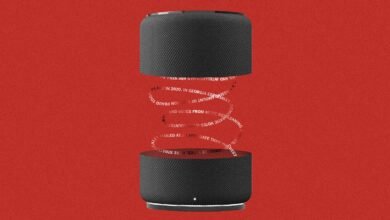9 advantages and disadvantages of digital twin technology

While digital twins can help manufacturers improve their operations, the technology also has some drawbacks. Production leaders must be aware of these common issues to avoid lack of technology ROI and other problems.
A digital twin is a virtual model of a real object or series of steps. For example, an automobile manufacturer might create a digital twin of an assembled part of a car, or a manufacturer might create a digital twin of its factory. A digital twin consists of the physical version of the digital twin, the software version of the digital twin, and the data that connects them.
The use of digital twins is expected to grow across all industries over the next decade. The global digital twin technology market is expected to increase from $12.91 billion in 2023 to $17.73 billion in 2024 and rise to $259.32 billion in 2032, according to a report by Fortune Business Insights.
Here are some benefits of using digital twins for manufacturing, as well as challenges that digital twin manufacturers often face.
4 benefits of digital twin technology
Using digital twin technology can help manufacturers improve their operations in several ways. Here are several.
1. Updated monitoring of operations
Digital twins can provide manufacturers with more current insights into their operations.
A digital twin provides near real-time visibility into the performance of facilities and assets, said David Williamson, who has used digital twins in previous manufacturing IT roles and is currently CIO at Abzena, a life sciences company located in San Diego.
The physical representation of an item and its software counterpart are often connected by an IoT sensor, and this data provides users with information about the status of the physical object. For example, a user can learn from digital twin data that a piece of equipment is operating slower than normal and analyze the problem.
2. Greater insight into employee performance
This greater visibility also gives supervisors more information about, for example, the performance of workers on an assembly line.
Digital twins allow production supervisors to identify problems in manufacturing processes, said Karen Panetta, dean of graduate studies at the Tufts University School of Engineering, located in Medford, Massachusetts.
For example, digital twin technology may share that a piece of equipment only operates once every 15 minutes instead of once every five minutes as it should. A supervisor can look into the problem and find out why an employee is behind on their tasks, which will improve the facility’s overall performance.
3. Enhanced insights through scenario simulation
Digital twin technology can also tell users how their facility might perform in the future if a certain change is made.
For example, a user could use digital twins in a warehouse to predict the ways in which a robot would interact with warehouse equipment, said Shreyas Shukla, principal research director at Info-Tech Research Group, an IT consulting firm located in in London, Ontario. . Users can also add prescriptive analytics to the digital twin, which suggests the best actions to take in a specific scenario.
For example, if the most important consideration in a given situation is to build a product quickly, prescriptive analytics can suggest what steps to take to ensure the process is accomplished as quickly as possible.
4. Cost Savings
Digital twin technology can also reduce a company’s costs because users won’t have to perform as much real-world testing with physical prototypes.
“You can ensure a product meets compliance requirements or customer needs in the digital world before building it in the physical world, saving a [lot] of money,” Shukla said.
5 challenges of using digital twin technology
However, the use of digital twin technology can also bring some potential problems. Production leaders must learn about these issues so they can prepare for and, hopefully, avoid them.
1. Greater complexity than expected
Digital twins may seem simple to use, but some companies have found that this is not the case.
“[We] found [using digital twins] It was a lot more complicated than we expected,” Williamson said of his experiences with digital twins.
Companies that are building new factories, processes or products may find it easier to create a digital replica, he said. However, organizations with existing IT infrastructures may need to upgrade their existing systems before they can cost-effectively build digital twins.
2. Poor data quality
A digital twin requires the right data to function, so poor data quality can negatively impact digital twin operations.
Lack of data or poor data quality will limit the use of digital twin technology or make it impossible altogether, Shukla said.
Production leaders must confirm that their data quality is optimal before adding digital twin technology to their operations.
3. Customization Requirements
Business leaders must plan for the fact that they will need to make their digital twin adapt to their organization and its needs.
“People try to intervene and just have a one-size-fits-all solution, but you can’t do that,” Panetta said. “[A digital twin] it should be customized according to your purpose and goals.”
Doing so requires more work and time, so leaders must plan for these additional expenses.
4. Prohibitively high costs
Organizations may find digital twins and the implementation process more expensive than leaders anticipated.
The costs associated with creating and effectively using digital twins can delay a positive ROI for many organizations.
“I believe this technology will become standard and generate benefits,” Williamson said. “But for many [companies]It’s still on the way.”
5. Lack of knowledge about the right applications
Industry leaders must also make sure they are only applying digital twin technology to the right processes, rather than seeing the technology as a good solution for everything.
“One of the biggest challenges [with digital twins] it’s understanding what the technology is for and what it’s not for,” Shukla said.
For example, many manufacturers believe that digital twin technology can serve as a substitute for real-world testing, which is not correct, Shukla said.
“The goal is to complement real-world testing,” he said.
As with many other technologies, production leaders must confirm information themselves rather than relying unquestioningly on insights from digital twins.
“If you believe in [the technology] Without a doubt, that’s when it comes back and bites you,” Panetta said.
Mary K. Pratt is an award-winning freelance journalist focusing on covering enterprise IT and cybersecurity management.



